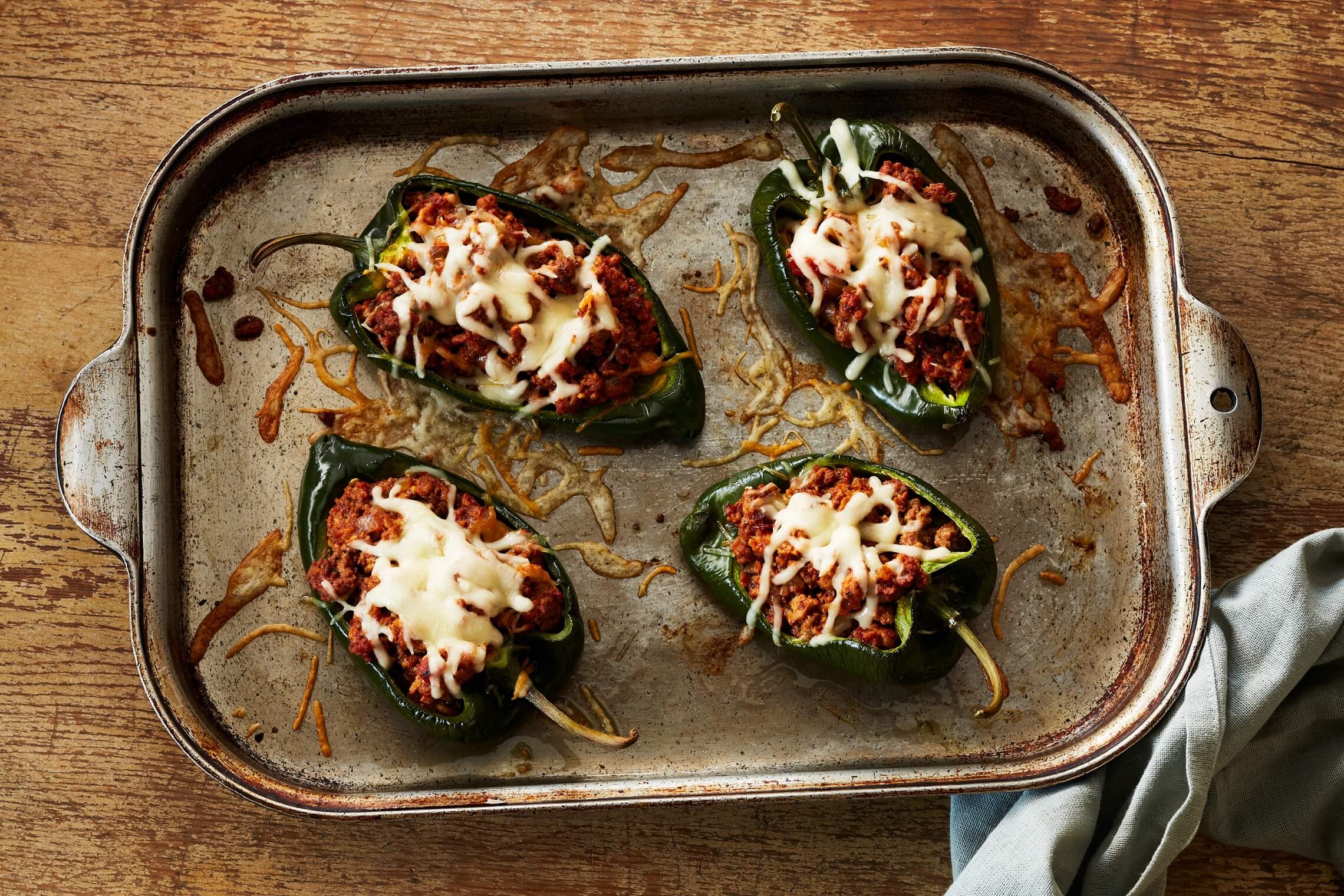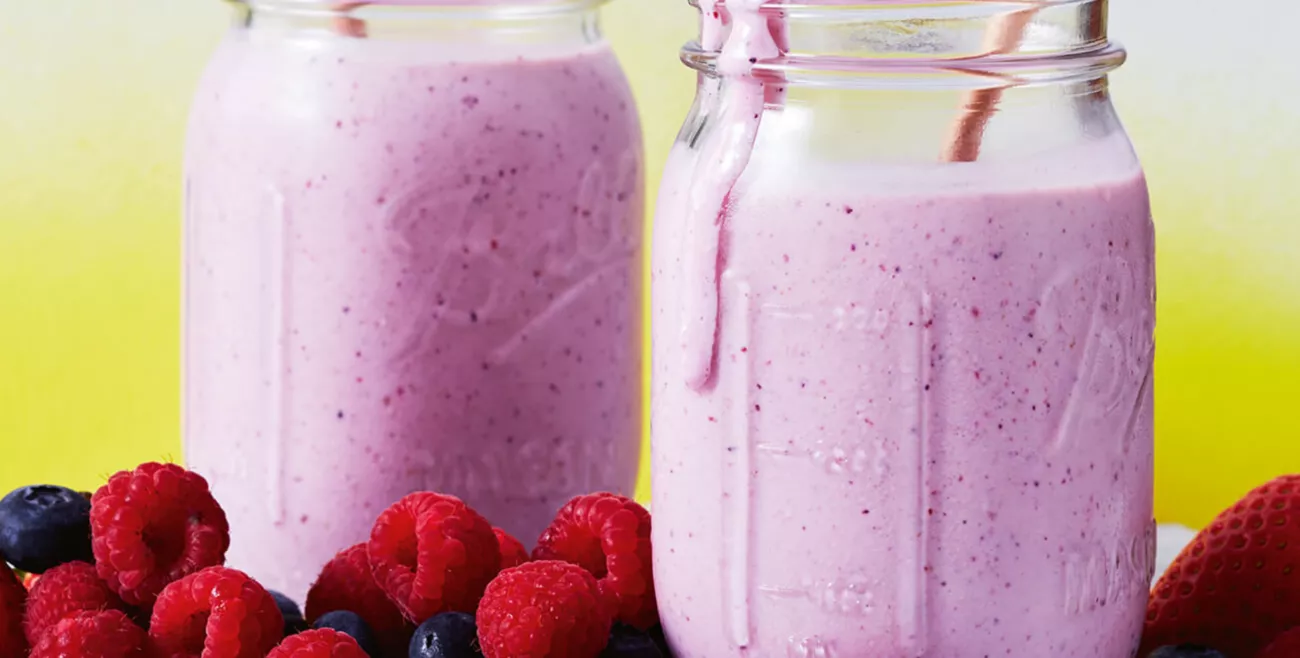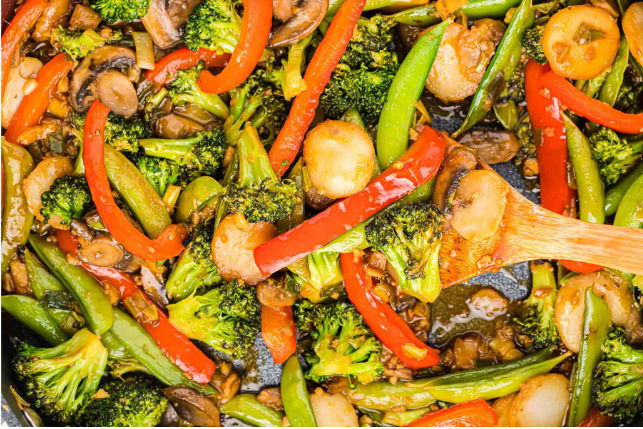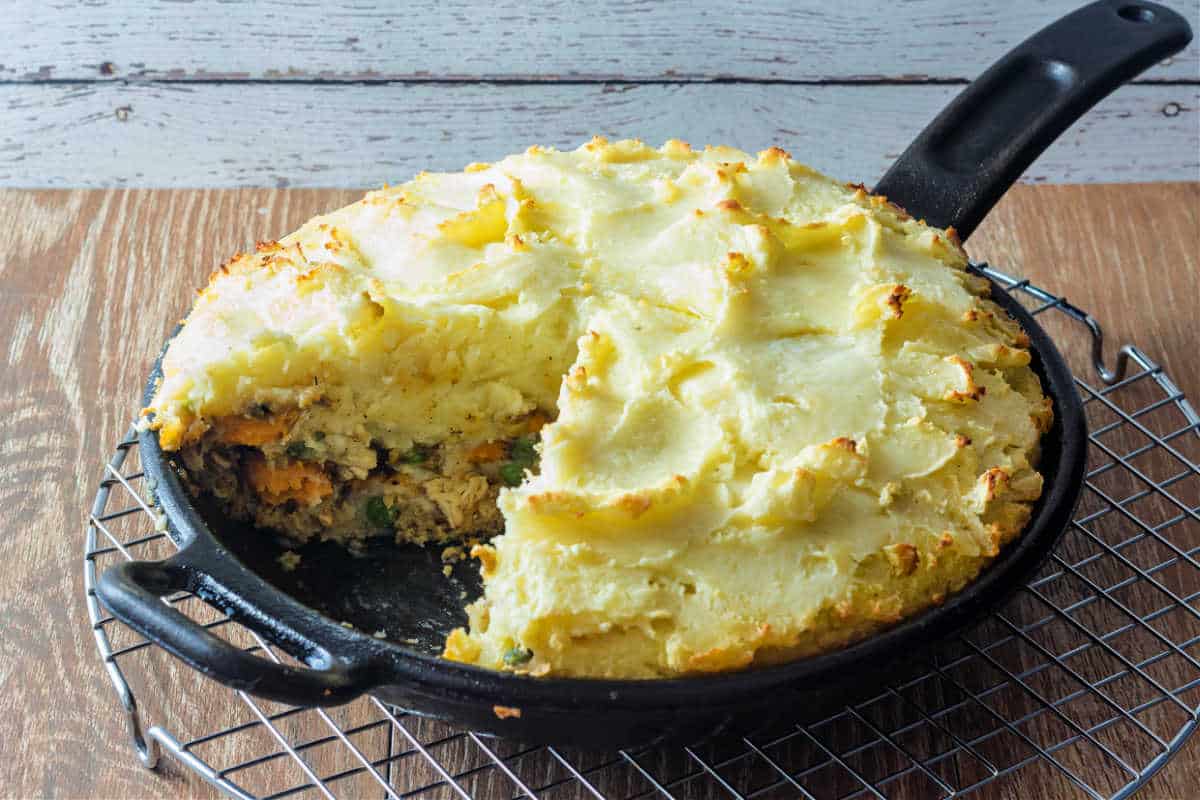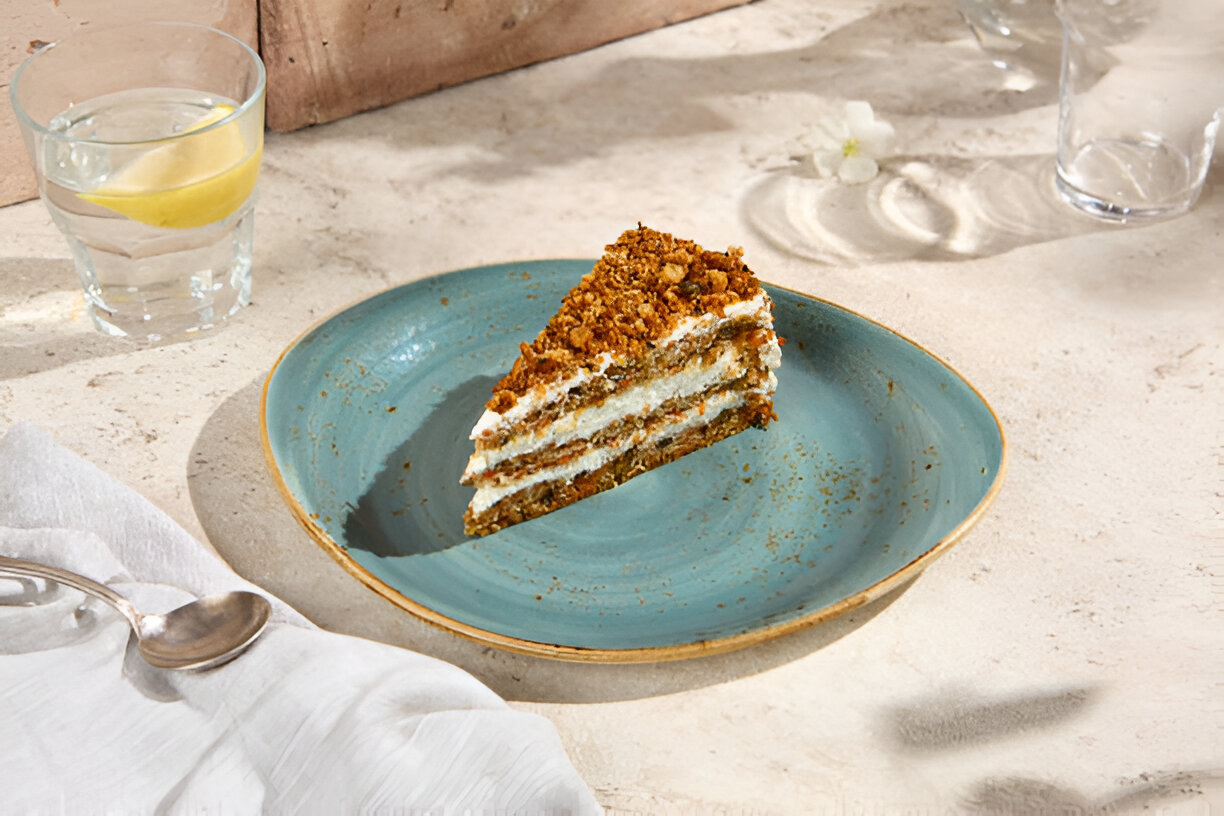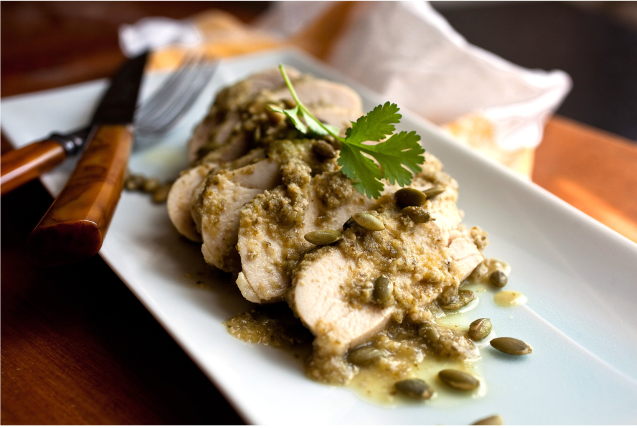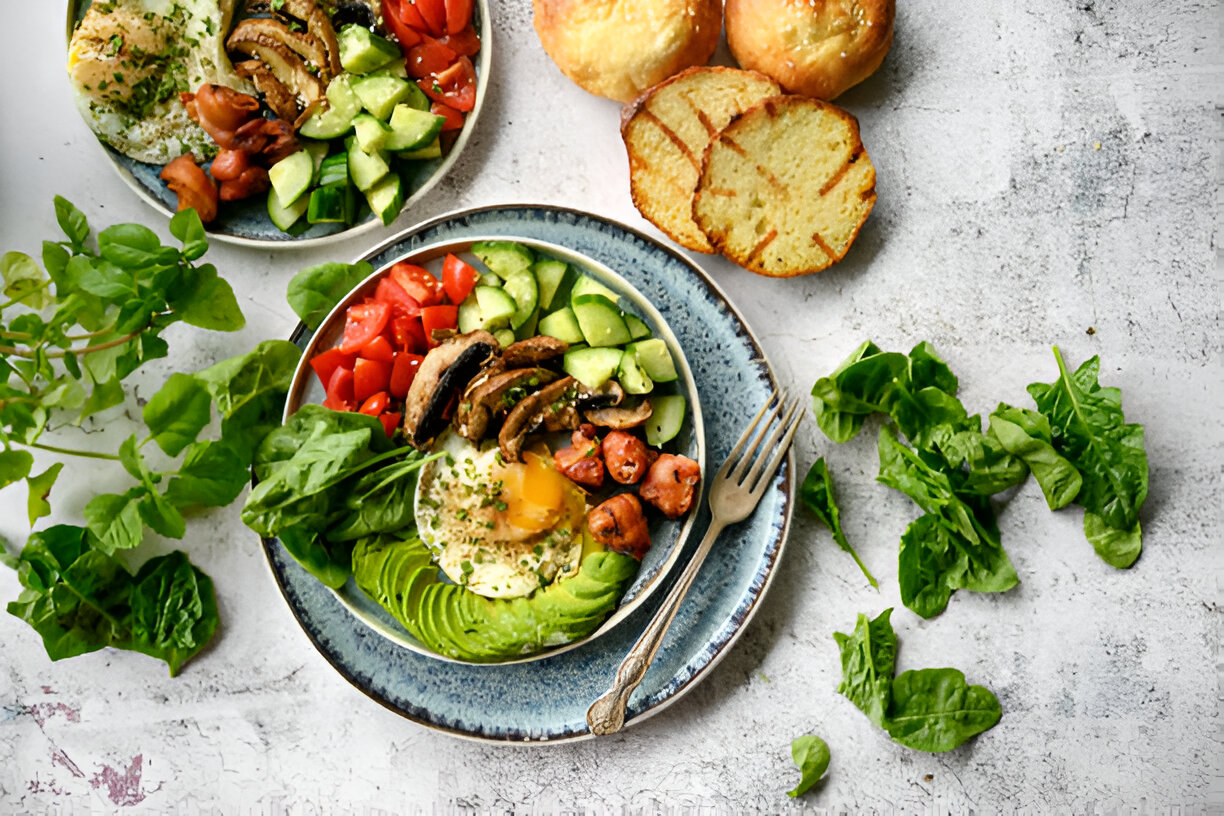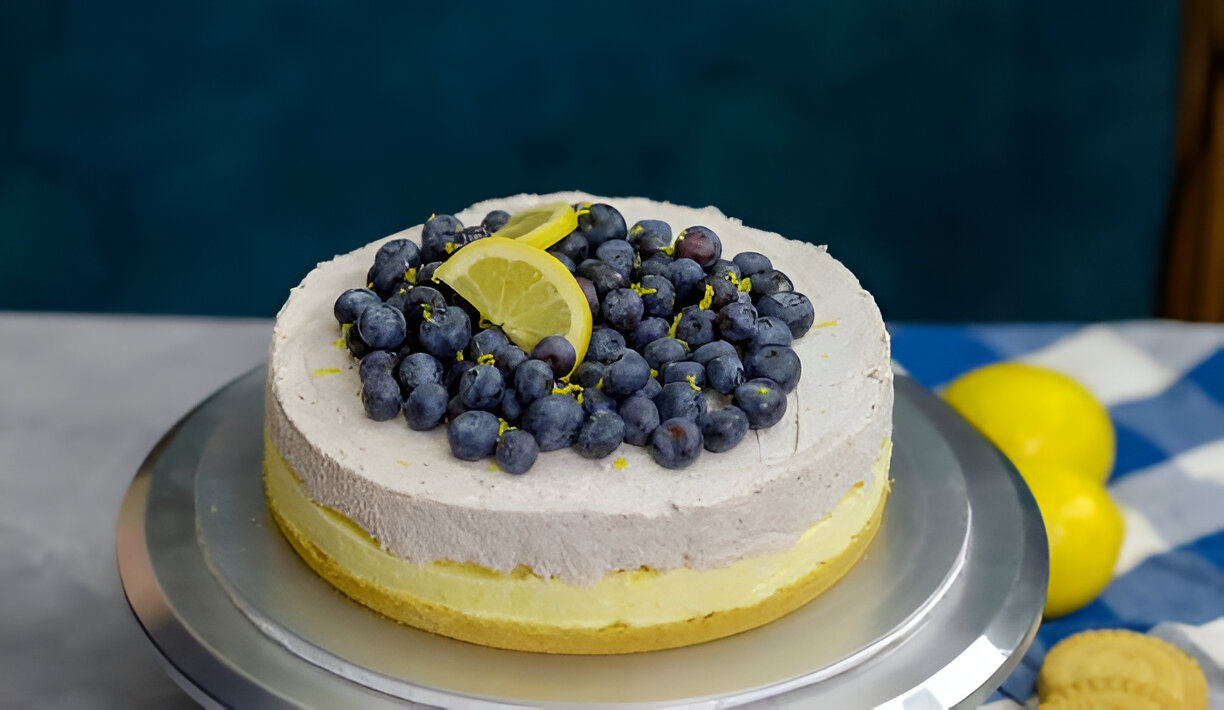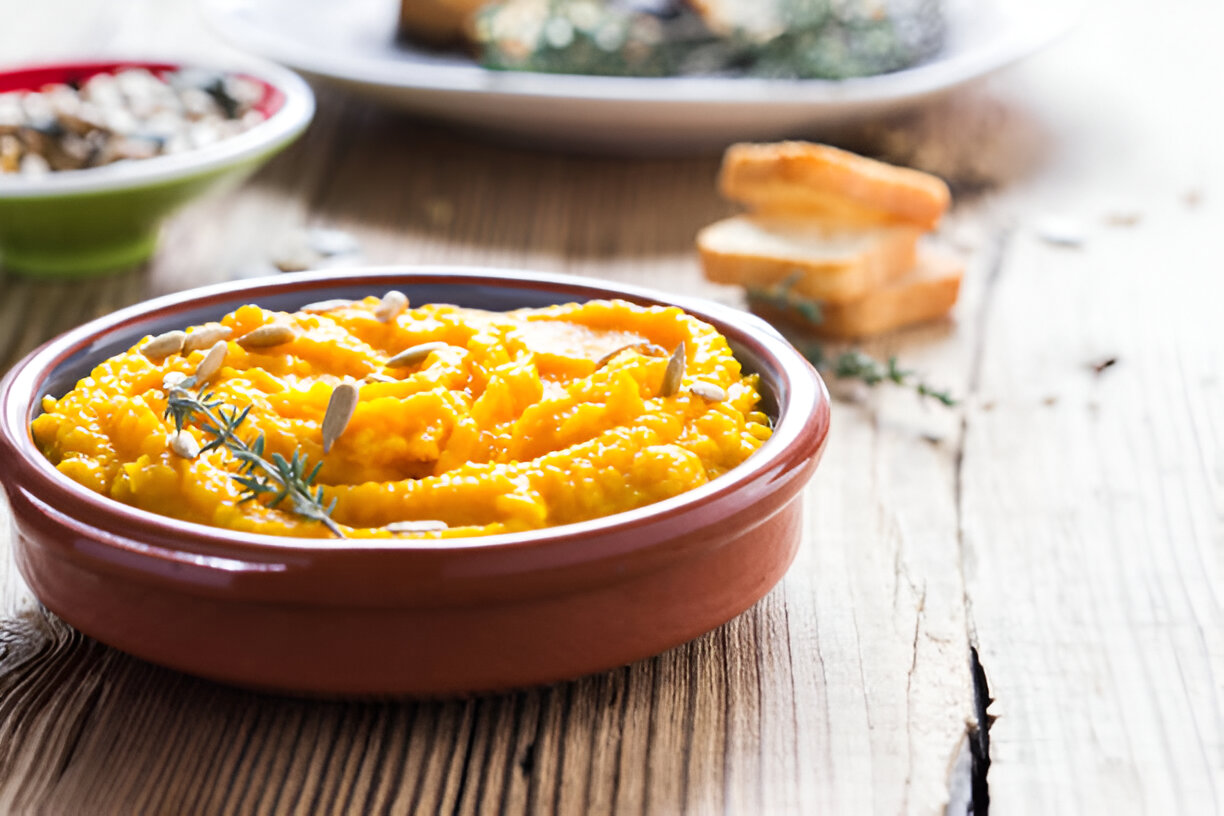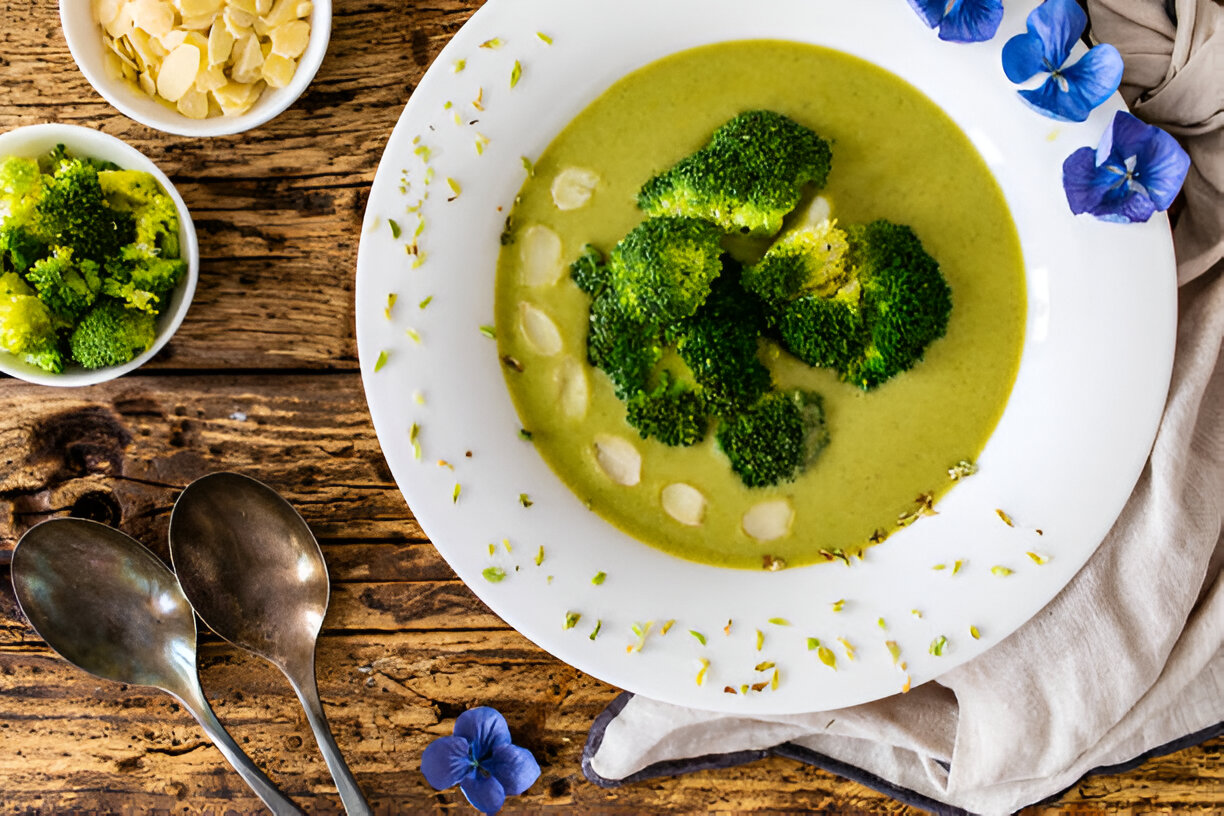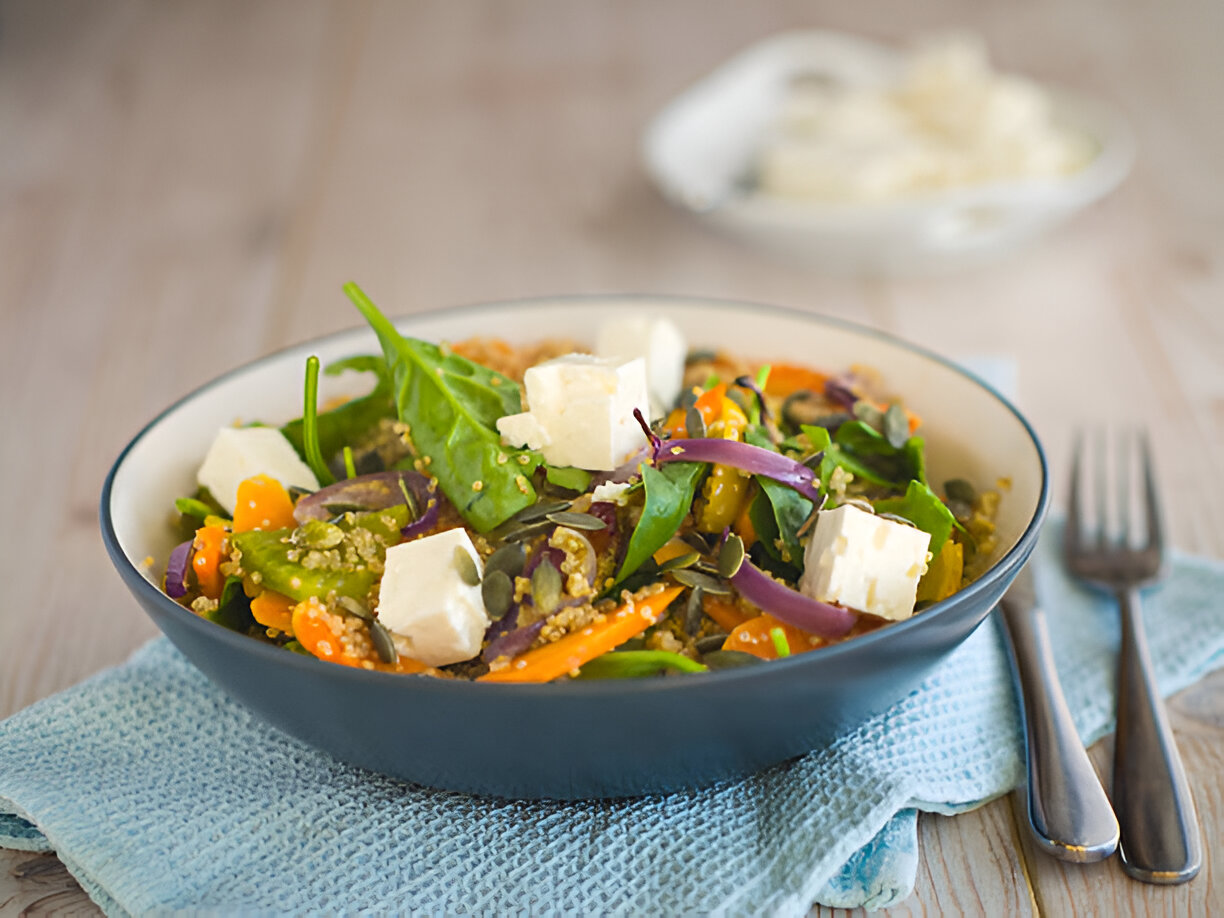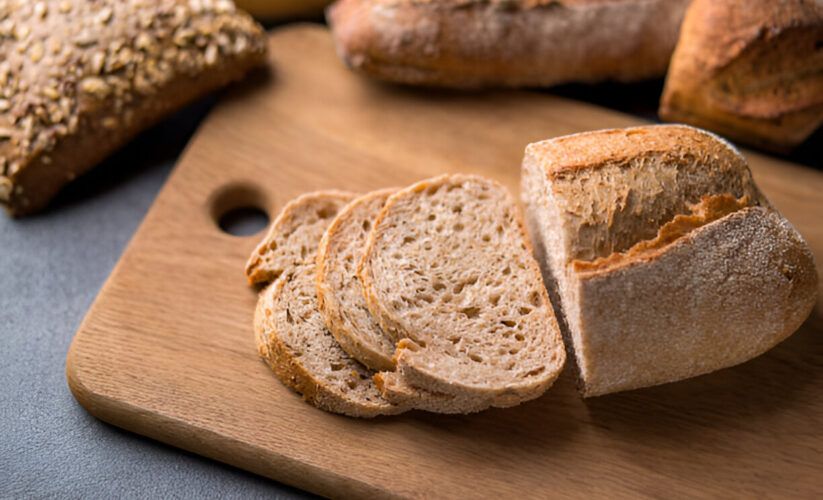
Every Wednesday morning, on the soothing edge of the California beach town of Santa Monica, a strange scene unfolds at the local farmers’ market. In the last stall, a middle-aged baker named Jack Bezian stands selling sourdough loaves—made mostly with plain, refined wheat flour—surrounded by large signs screaming about the nutritional land mines in standard bread. “Don’t eat whole grains if you don’t know how,” one sign proclaims. “Roman soldiers had only sourdough bread to get protein,” says another. “Why look for other sources of food when sourdough gives you most of the nutrients in a balanced form?” asks a third.
Despite this odd battery of assertions—and the intensely sour flavor of the loaves buttressing his claims—Bezian’s bread sells like crazy every week. His most devoted customers are those who have suffered discomforts, often for years, from various properties in wheat products—primarily the presence of gluten, the grain’s core binding element.
Take Vivi Cortes, who approached Bezian’s stand one morning, pushing a 2-year-old in a stroller with her 8-year-old son by her side. For years, Cortes had noticed that after she and the family ate bread, they tended to get constipated and fall into a kind of stupor—“brain fog,” she called it. And her son’s reaction seemed more serious. “He was always fidgeting, and he was never full,” she told me. Cortes eventually took her son to a pediatrician, who found the boy to be gluten intolerant. Alarms went off. “We have a celiac friend. She is only eighteen and now she no longer has her colon.” (Among gluten sensitivities, celiac disease is in a class of its own. By far the most serious of the family, it springs from a set of inherited genes but at some point is mysteriously provoked into a permanent autoimmune disorder.)
At first, Cortes followed the advice given to everyone with sensitivities to gluten: Stop eating wheat. And when it comes to bread, pasta, and other starches, buy gluten-free. Unfortunately, this isn’t much of a solution, for three reasons. First, restricted diets are difficult to maintain, especially for children. Second, most gluten-free products are expensive, yet comparatively empty nutritionally; many include their own little nasties (xanthan gum and refined sugars, for instance, as well as gooey, fiberless starches). “It’s the soda-pop version of bread,” said David Killilea, Ph.D., a scientist at Children’s Hospital Oakland Research Institute (CHORI), in California, who has been analyzing bread flours. Third, and partly because of those nasties, gluten-free bread can feel unsatisfying. As Cortes’s son continually told her, “I need bread! I want normal food!”
So when a friend recommended Bezian’s loaves, Cortes was more than willing to give it a try. “It was amazing!” she said. “His focus didn’t change, he didn’t eat so much. Now we eat it all the time, like a vitamin. We eat six to ten loaves a week. And we stay stable in our weight and in our energy.”
As Cortes paid for her seven loaves, her enthusiasm turned expansive. “If you eat a living product, you’re going to stay alive,” she said. “If you eat a dead product, you’re gonna die.” Bezian smiled, because Cortes so beautifully recited his heretical theories—namely, that in contrast to standard bread, some microbes in his loaves survive the heat of an oven; that his bread contains more probiotics and other nutrients than uncooked fermented foods such as yogurt and sauerkraut, which are believed to be packed with beneficial bacteria; and finally, this: “Never look at just the ingredients for your nutrition,” Bezian told me. “Look at the microbes that grow on those ingredients.”
All of which presents a conundrum. On one hand, few of Bezian’s ideas hold up under scientific scrutiny (for starters, dough can’t turn breadlike until it reaches 180 degrees, and 140 degrees kills most microbes, including probiotics). On the other hand, there is clearly something special about Bezian’s bread. Even as compared with other sourdoughs, his loaves taste surprisingly rich, with a network of flavors that seem unusually balanced, as if they had achieved some elusive gastronomic unity. The result is a bread that is simultaneously addictive and satisfying. “The first time I tried this bread, I thought, Oh my God! I have never known what real bread is!” said Kim Mora, a friend of Cortes’s. “It’s like manna!” said Lori Shapiro, a rabbi from Venice Beach who suffers from gluten intolerance and has become a devotee of Bezian’s loaves.
Cortes’s husband believes he has developed thicker, healthier hair thanks to the b read, and another customer—Shirley Vernale, who started losing her hair during the stressful years of child-raising— found her hair growing back after she started eating it five years ago. “Now, my hair is amazing,” she told me. “It’s made of Jack’s bread!”
Exactly how Bezian achieves such nutritional magic is difficult to discern. Operating with no storefront bakery, he prepares his bread in the back of his dusty former grocery store on the edge of downtown L.A. The most he’ll divulge about his methods is that he lets his dough ferment for a very long time—sometimes, he said, for as long as a month. (Most sourdough bakers let their dough sit for 20 hours at most.) Since Bezian refrigerates his dough rather than leaving it at room temperature, though, other bakers I spoke with suspect those extra weeks are simply delaying his fermentation, not enriching it. It all makes you wonder: Would any sourdough loaf therefore be fine for the gluten sensitive? And just what’s behind the seeming ubiquity of today’s gluten issues anyway?
Bread and the Baby Boomer
For some 10,000 years, humans have eaten wheat and a handful of other grains that contain gluten with relative ease. After World War II, however, digestive complaints worldwide began to climb. In the past 50 years, the rate of people testing positive for celiac disease just in the United States has risen more than 400 percent—and that’s allowing for any increase from better detection methods. There are no reliable statistics on the number of people with non-autoimmune sensitivities—namely, gluten intolerance or wheat allergies—and the symptoms those sensitivities provoke. (Beyond fatigue, these can include bloating and diarrhea, or, in the case of wheat allergies, hives and asthma attacks.) But Peter Green, a gastroenterologist at Columbia University and the author of Celiac Disease: A Hidden Epidemic
As with many diseases today (cancer, for instance), the causes remain both mysterious and multitudinous— poking at us from every corner of modern life. To take one example, Green is studying a bacterial enzyme called transglutaminase, which appears to interact with gluten in a way that may spark reactions. But the enzyme, which is used in artificial form to bind processed meats, is difficult for consumers to track: Because the Food and Drug Administration classifies it as Generally Recognized as Safe (GRAS), producers don’t have to list it on labels.
Wheat is more decipherable, but only slightly. While the evidence so far is sparse and disorganized, there are indications that a good portion of today’s gluten sensitivities come from two big changes in the past half-century: first, in how we grow and process wheat; and second, in how we turn its flour into dough. This brings us back to Bezian, and to why sourdough appears to be so potent.
Flour and water cannot become bread without some kind of rising agent. Until commercial yeast was invented, over a century ago, the only such agent available was a natural “starter,” which remains the engine of sourdough bread to this day. Despite its mystique, a starter is nothing more than flour and water that has been left to sit for days, and fed intermittently with more of both. Over time, the bacteria and yeasts that naturally exist in this environment— on the grain primarily, but also in the air, in the water, and on the baker’s hands—grow and multiply, creating hyperactive live cultures. These microorganisms are what make dough ferment, similar to the way milk ferments.
Over the past decade, several studies have found that some people with gluten issues can tolerate intensely fermented wheat. The studies are small, and celiac experts like Joe Murray, a gastroenterologist at the Mayo Clinic in Minnesota, consider their data weak. Still, they point in the same direction. One, published in 2007 in the peer-reviewedApplied and Environmental Microbiology, found that when wheat bread was thoroughly fermented, it reduced gluten levels from roughly 75,000 parts per million to 12—a level that technically qualifies as gluten-free. How is this even possible?
According to the literature, fermentation’s trick with sourdough lies in its native bacteria and yeasts. As these microbes feed on grain proteins and starches, they break down gluten into more digestible elements. They also gorge on the grain’s sugars, turning them into compounds that our stomachs absorb more slowly than the sugars in standard bread. “There is a transformation that happens with fermentation,” Peter Reinhart, the dean of American bread writers, told me. “It’s kind of a way of processing food without the heat.” As all these microbes munch away, pooping and farting as they go, they leave behind gases and more bacteria— the main elements of sourdough bread’s complex flavors. Expert bakers are thus essentially bug ranchers, managing their herds to achieve their signature balance between flatulence and, well, that other stuff. The result is a fecundity of enzymes, amino acids, and more than 200 flavor compounds.
Commercial bread cannot begin to duplicate this messy barnyard. Instead of being fertilized by a riot of voracious bugs, it is prepared with only one strain of yeast (Saccharomyces cerevisiae). Because of its vigor, Saccharomyces was targeted (by the great Louis Pasteur) and ultimately commercialized into powdered form. This left the yeast artificially isolated from its mates—the grain’s natural yeasts and bacteria. Jilted and lonely, Saccharomyces gobbles the dough’s microflora, rushing the fermentation process. Thus its bread’s relative flavorlessness— and the agent’s nickname: “instant yeast.” Bakers tolerate the yeast’s drawbacks because it affords a recipe that is idiotproof, and because it seriously speeds production.
Amazingly, though, Bezian is accomplishing his purported health feats with an ingredient that has long been considered all but nutritionally empty: unbleached, nonorganic, white flour. (Within the family of flours, the least nutritious turns out to be organic white flour, because it contains little if any of the vitamin, mineral, and malt “enrichments” that, by law, must be put back into non-organic white flour. As a result, organic white flour tends to make poor sourdough starters, since it is thin on the micronutrients that sourdough bugs feed on.) But why use white flour, to begin with? Or, as Reinhart put it, “Why not whole grain? Why not a different delivery system” for all those digestive enzymes?
If you ask Bezian, you’ll get another testimony to fermentation’s omnipotence. “You’re getting more nutrition from the fermentation than from the bran and germ combined!” he said. While I could find no scientist to back the entirety of that claim, Bezianis leery of whole-grain flour for another reason: Many of his customers find whole-grain breads difficult to digest, even when fully fermented. Why? Bezian believes it’s in part because the particles in whole-grain flour are rougher than those in white flour, which has been essentially powdered. If Bezian’s customers represent a trend, we have entered a whole new era. Not so long ago, whole grain flour—with its rich germ and its abundance of fiber—was at the apex of healthful eating. If people now need white bread because they can’t digest that fiber, something significant has changed.
Field Work
Half a world away, just outside the town of Mariager, on Denmark’s Jutland peninsula, a soft-spoken plant pathologist named Anders Borgen tends a two-acre organic farm that contains more than 2,000 kinds of wheat, none of which he can use commercially. “If I find a good variety, I am not allowed to sell it,” Borgen said. The European Union strictly regulates its grain farmers, allowing them to grow only those varieties that have been certified for reliable high yields.
High-yield wheat varieties made their global debut in 1961 when the American agronomist Norman Borlaug created rugged new varieties that benefited from the heavy applications of fertilizers. It also produced a field uncommonly thick with wheat berries. (He later exported his discovery to help developing countries feed their growing populations and is frequently credited for having saved a billion lives.) Not surprisingly, Borlaug’s success inspired imitators and high-yield wheat was soon dominating grain fields from India to Iowa.
A bigger, hungrier world also required more industrialized methods of production. Farmers obliged by supplying commodities tough enough to endure handling by machinery and transcontinental shipping. Having survived drought and disease, wheat now had to withstand the beating that flour would get in industrial dough mixers—and still emerge as the puffy loaves then beginning to adorn grocery-store shelves.
The primary answer to these demands was more plant muscle, which meant stronger glutens. As genetic variety in the world’s wheat fields slowly narrowed to fulfill these goals, we were left with yet another instance of monoculture—in this case, one that is literally gut-wrenching. “There is good evidence that ancient grains didn’t have anything like the toxicity that current wheat does,” says Columbia’s Dr. Green.
So far, the medical world has only been able to pinpoint what is toxic to celiacs—namely, some of the protein compounds in modern wheat’s gluten. But that’s been enough to get people theorizing that it may be something similar bothering nonceliacs. “A lot of people went in [to a Whole Grains Summit in May] wondering why all these folks were making such a big deal about gluten, and whether the whole gluten-free thing was a fad,” Cynthia Harriman, director of Food and Nutrition Strategies for the Whole Grains Council, told me. “By the end of the conference, there seemed to be a rising concern that something is going on that we’re contributing to through our methods of breeding.”
Since no one is certain what that something is, experts now are digging into every possible corner of the wheat story. The first is basic nutrition. Harriman told me that although wheat in North America goes through 50 different quality assessments—to analyze factors such as yield and baking performance—“none are related to nutrition.” And studies have found that as farmers further pump up growth with fertilizers, nutrients tend to decline. “When yield goes up, you see micronutrients like iron, zinc, and selenium go down,” Borgen told me. What grows in their place? “Starch and glutens,” he said.
A 2009 study out of Norway, published in the Journal of Agricultural Chemistry, identified similar changes in industrial agriculture. It found that many wheat proteins were significantly transformed by the nitrogen and sulfur in chemical fertilizers. (Modern wheat is built for chemical treatment and irrigation, but when it’s farmed under “unsupplemented,” organic conditions, its performance falls—roughly matching a few preindustrial varieties.)
The modern assault on wheat extends to the industrial flour mill. Traditional stone mills grind the kernels of grain, then sift out varying amounts of bran to create different grades of white flour—products sometimes called “semirefined” flour. This allows the flour to retain the wheat’s germ, which houses so many of its nutrients. While some small European mills still operate this way, all but a few North American mills have taken a different course. Because growers in the United States have increasingly adopted harder wheat, millers now tend to smash the grain with steel hammers or rollers. Then, to create white flour (still the market leader), they toss the bran and germ into separate piles, leaving only the starchy center for the consumer.
Today, when a whole-wheat order comes into a roller mill, the staff simply puts the bran and germ back into the white flour and ships it off. Most experts say this process of “recombining” wheat’s parts makes no difference but others aren’t convinced. “It’s like disassembling a car, then putting all the parts in a bowl and saying it’s a car,” said Mark Shigenaga, Ph.D., a scientist at CHORI who specializes in digestive issues.
Craig Ponsford is also skeptical. An internationally renowned baker in San Rafael, California, he told me that he continually gets customers who can’t handle bread made with standard flour and yet do fine on his loaves, which are baked with unseparated, 100 percent whole-wheat flour. As evidence that it’s the flour, not the process, that gets the credit, Ponsford said that he hears the same stories about his pasta, which endures no fermentation and is made with the same unseparated flour. Ponsford buys his flour from Joe Vanderliet, the proprietor of Certified Foods, a mill in Woodland, California, who is committed to the “whole-milled” process and stone grinds much of his flour.
In fairness, many stone mills lose their share of nutrients too. A literature review by an international group of grain scientists found that, when compared with hammer- and roller-milled flour, stone-ground flour typically loses more amino acids, lipids, iron, zinc, calcium, and, with some grains, even fiber. But when it comes to vitamin E—wheat germ’s primary nutrient—the stone mills excel by a factor of two to one. (One possible reason: Mills that separate out the germ have to heat it to keep the germ from turning rancid—a process that some believe inhibits the vitamin’s bioavailability.)
The Way Forward (Or Back?)
While mountains of tough flour may be an efficacious way to feed a growing world, the cost of this approach is coming under increasing scrutiny. “If the current system is giving people inferior food or causing genetic disorders,” bread expert Reinhart asked, “is it worth it?” Maybe the time has come for a smaller wheat supply, but one of greater diversity and quality. While global demand for grain continues to increase, over the past century grain consumption in the U.S. has actually declined. That fact might argue for a system in which finer, heirloom grains play a more vital role.Thom Leonard, a Georgia-based baker and author who has been a longtime consultant to millers, believes such an arrangement has potential. Leonard has been experimenting with heirloom grains of Turkey wheat, giving them to farmers to grow in their fields, and he continually hears accounts of people who suffer some sort of gluten sensitivity (short of celiac disease) who do fine eating his grain. Mark Nightengale, who runs Heartland Mill in Kansas, has also begun experimenting with the wheat. “With our genetic selection,” Nightengale said, “we’re beginning to wonder if we haven’t unknowingly chosen proteins that aren’t good for us.”
Chad Robertson, co-owner of Tartine, a bakery in San Francisco, also is on the trail of the past, having spent the last few years traipsing across Europe in pursuit of heritage wheat. “I feel like these ancient grains will be the next heirloom tomato,” Robertson told me. “A few years ago, you couldn’t find that stuff in a store. No one thought they’d sell because they’d be too expensive. Now they’re mainstream.”
Robertson’s early experiments suggest he might be on to something. His wife, Elisabeth Prueitt (Tartine’s other owner and its lead pastry chef), has become gluten intolerant—enough so that she has difficulty testing her own pastries. Prueitt exhibited no symptoms during the couple’s years in France, where she ate bread constantly. (It may be no coincidence that French flour is softer than American varieties and contains weaker glutens. It is also frequently stone-ground.)But here in the States, Prueitt’s reactions are so strong that she hasn’t wanted to eat her husband’s bread, even though Robertson, like Jack Bezian, uses only natural sourdough, with a relatively long ferment. Then, a few months ago, Prueitt tried a loaf that Robertson had made with spelled and emmer—two soft, ancient wheat. She loved it and consumed nearly a pound. The next morning, no reaction. “This was pretty major because I’ve been living with her for years with this,” Robertson told me. Prueitt has been eating the bread—occasionally, warily, but comfortably—ever since. Robertson is now working with local farmers to grow a few ancient grains. “These are my favorite breads now,” he said.
Back in Denmark, Borgen, too, has managed little stabs of success. Whenever he comes across promising heirloom seeds,he gives them to neighboring farmers, who surreptitiously propagate them. When Danish government officials heard about this, Borgen said, they secretly applauded his efforts to advance crop diversity. It’s enough to give you hope. I can almost imagine a day when every town has a bakery stocked with bread that anyone can eat. Just above some basic, inexpensive sourdough loaves, there might be Turkey wheat baguettes, along with a few braided beauties of emmer or spelt. Kind of the way it used to be.









